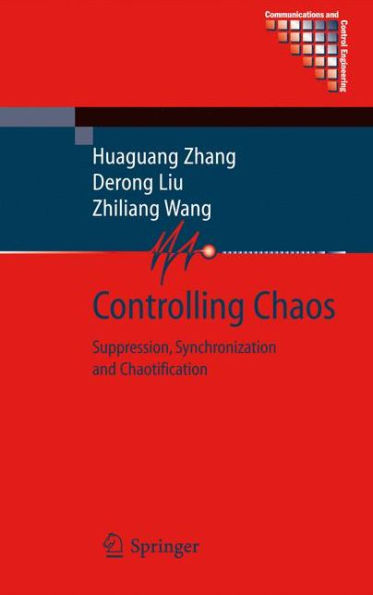Controlling Chaos: Suppression, Synchronization and Chaotification
Controlling Chaos achieves three goals: the suppression, synchronisation and generation of chaos, each of which is the focus of a separate part of the book. The text deals with the well-known Lorenz, Rössler and Hénon attractors and the Chua circuit and with less celebrated novel systems. Modelling of chaos is accomplished using difference equations and ordinary and time-delayed differential equations. The methods directed at controlling chaos benefit from the influence of advanced nonlinear control theory: inverse optimal control is used for stabilization; exact linearization for synchronization; and impulsive control for chaotification. Notably, a fusion of chaos and fuzzy systems theories is employed. Time-delayed systems are also studied. The results presented are general for a broad class of chaotic systems.
1101512215
This monograph is self-contained with introductory material providing a review of the history of chaos control and the necessary mathematical preliminaries for working with dynamical systems.
Controlling Chaos: Suppression, Synchronization and Chaotification
Controlling Chaos achieves three goals: the suppression, synchronisation and generation of chaos, each of which is the focus of a separate part of the book. The text deals with the well-known Lorenz, Rössler and Hénon attractors and the Chua circuit and with less celebrated novel systems. Modelling of chaos is accomplished using difference equations and ordinary and time-delayed differential equations. The methods directed at controlling chaos benefit from the influence of advanced nonlinear control theory: inverse optimal control is used for stabilization; exact linearization for synchronization; and impulsive control for chaotification. Notably, a fusion of chaos and fuzzy systems theories is employed. Time-delayed systems are also studied. The results presented are general for a broad class of chaotic systems.
This monograph is self-contained with introductory material providing a review of the history of chaos control and the necessary mathematical preliminaries for working with dynamical systems.
169.99
In Stock
5
1

Controlling Chaos: Suppression, Synchronization and Chaotification
344
Controlling Chaos: Suppression, Synchronization and Chaotification
344Hardcover(2009)
$169.99
169.99
In Stock

Product Details
| ISBN-13: | 9781848825222 |
|---|---|
| Publisher: | Springer London |
| Publication date: | 07/24/2009 |
| Series: | Communications and Control Engineering |
| Edition description: | 2009 |
| Pages: | 344 |
| Product dimensions: | 6.40(w) x 9.30(h) x 1.10(d) |
From the B&N Reads Blog
